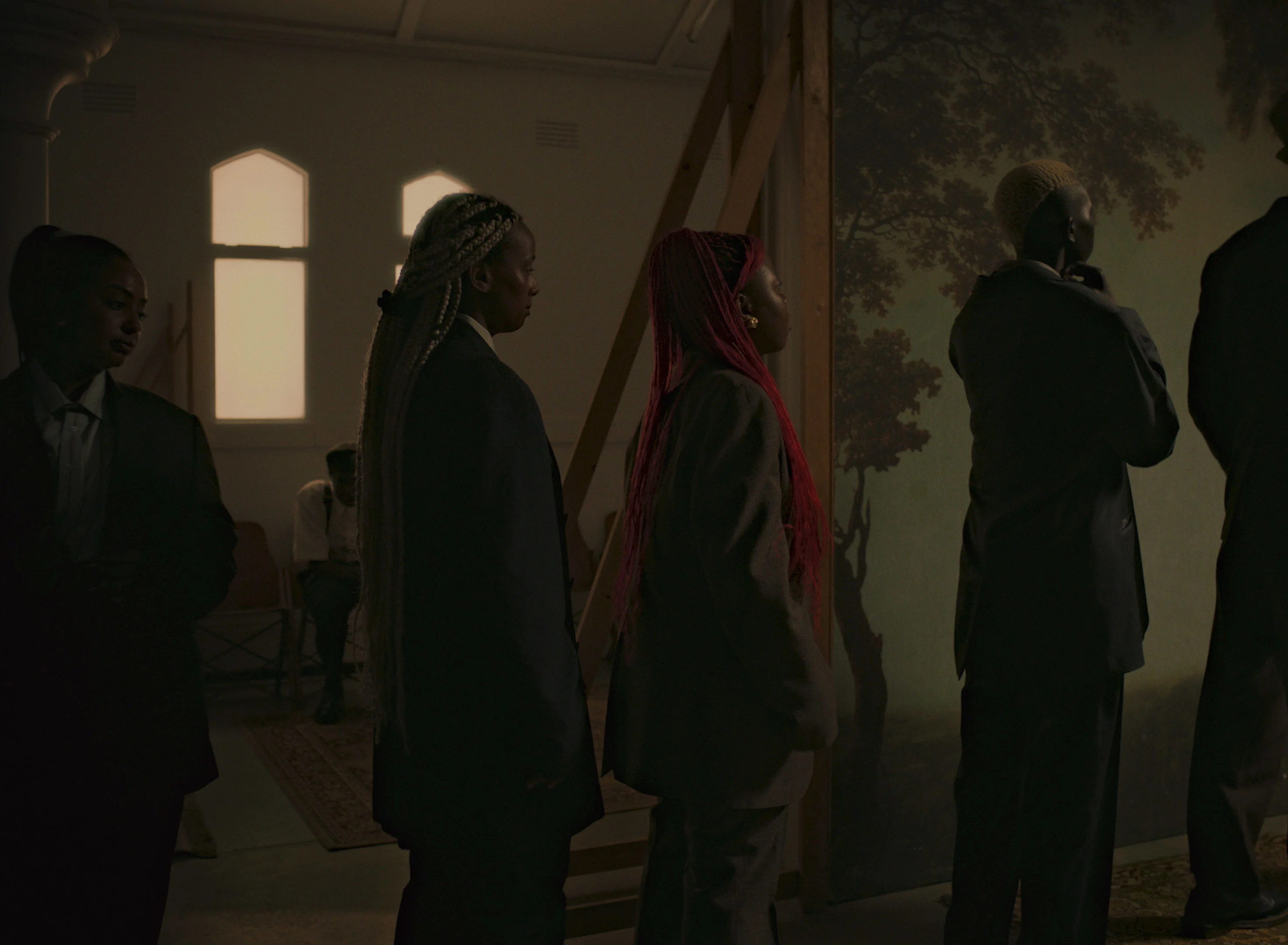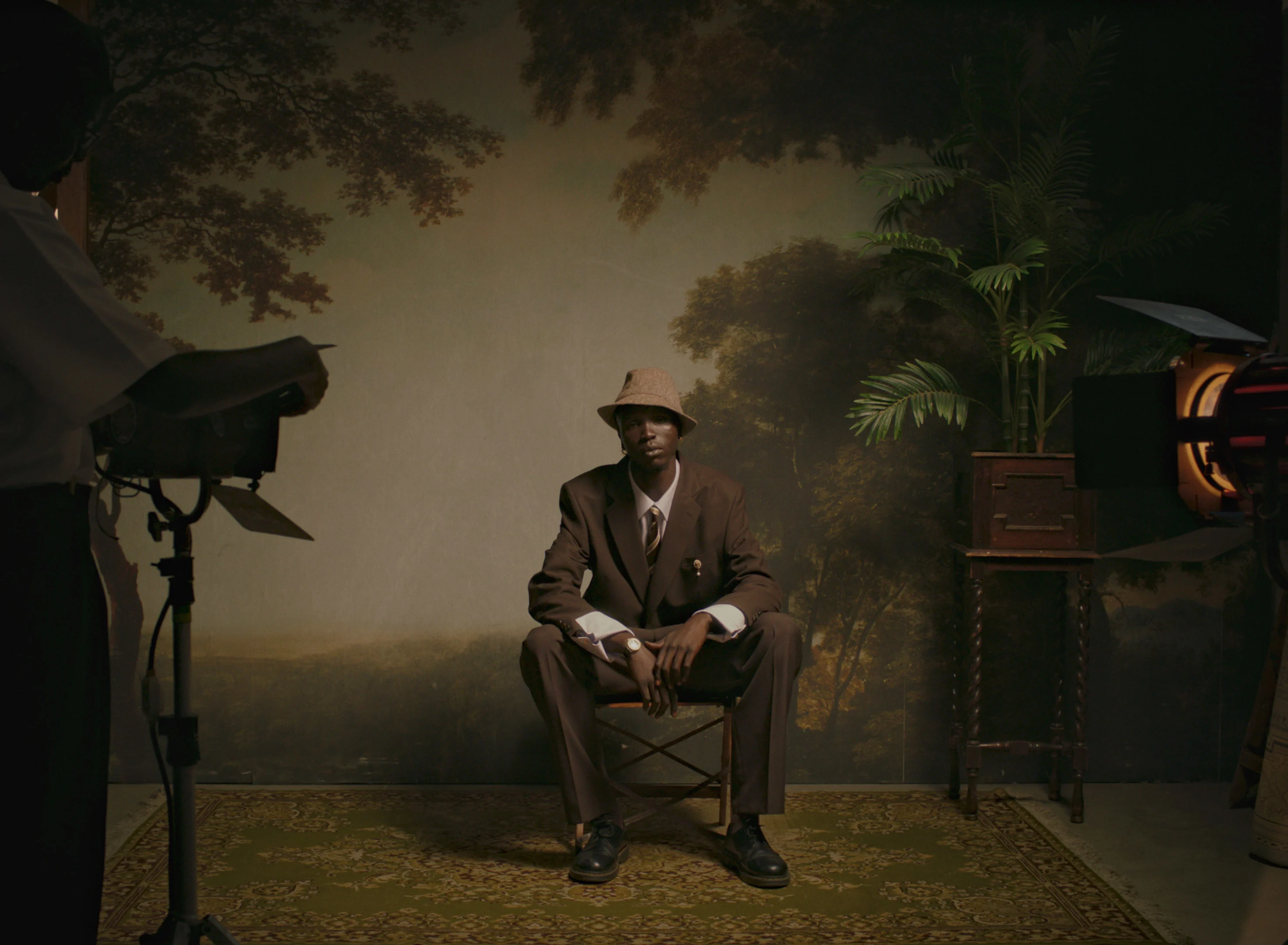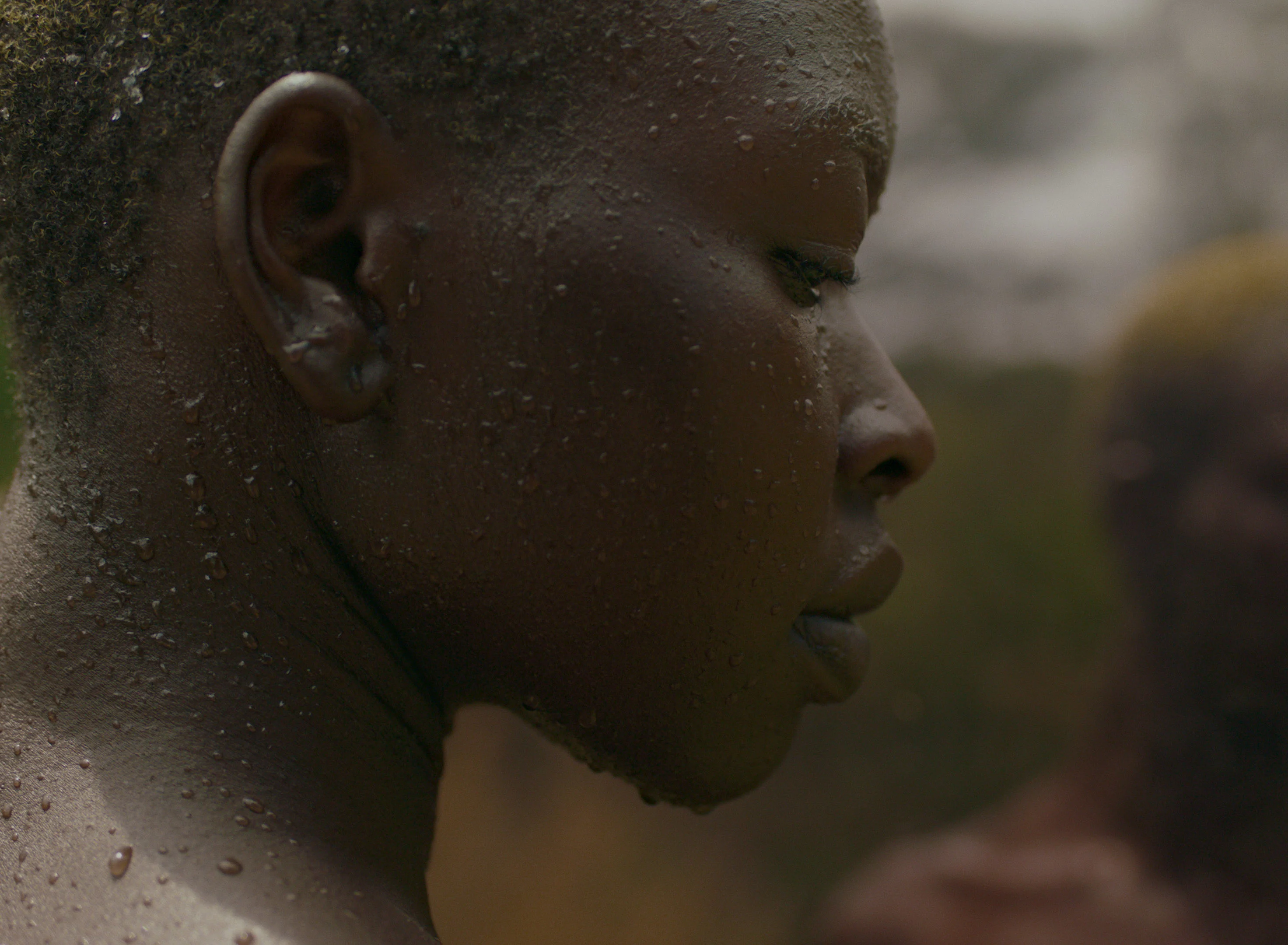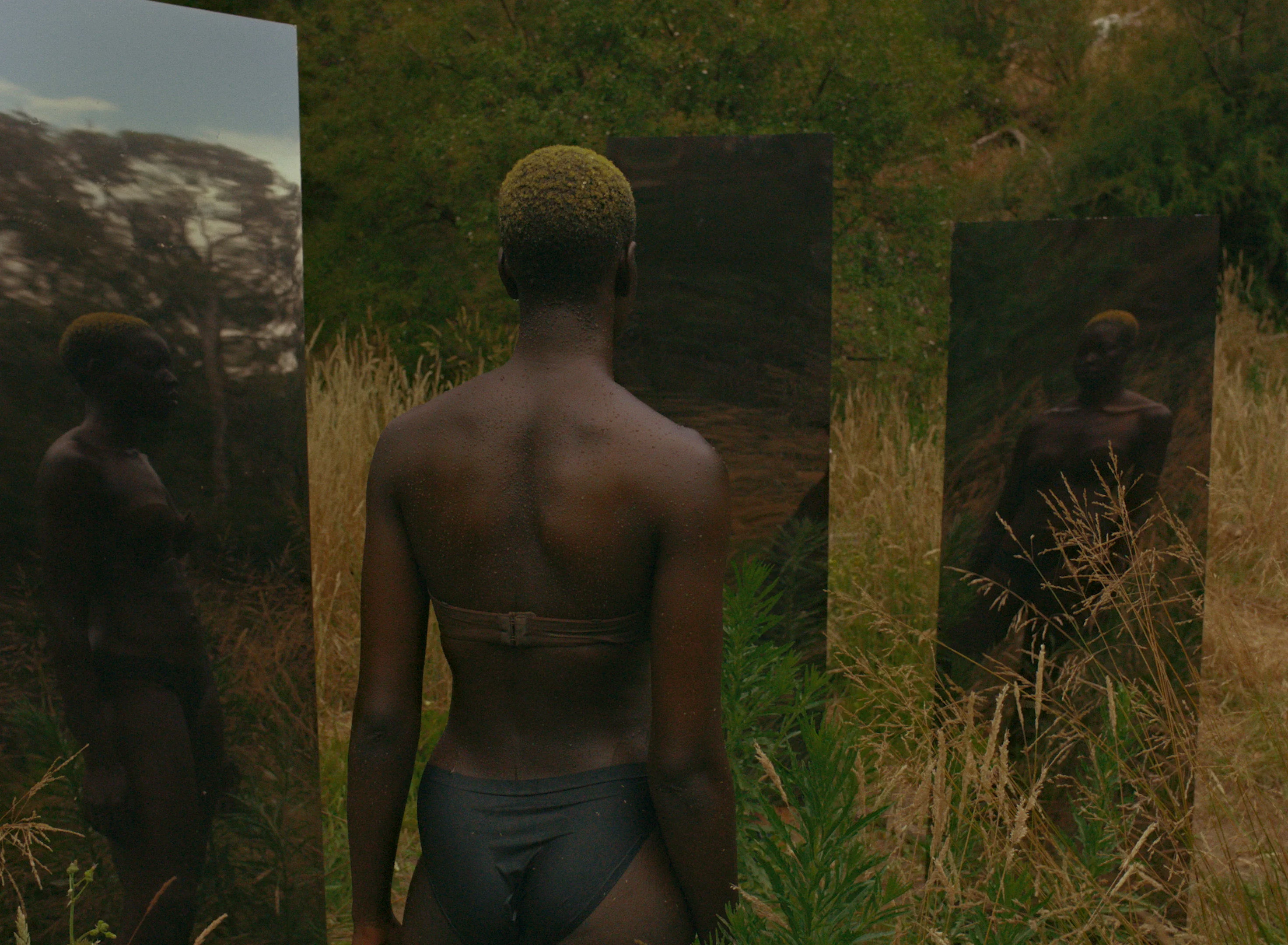
Filmmaker Atong Atem moved from South Sudan to Australia at the age of six, and her experiences since inspired her to create “Banksia,” a film named after the wild flowers that grow in the country. She tells writer Phoebe West how the film is her attempt to understand her own feelings on life as a migrant, as well as to explore the evolving experience of migrants in the country since the first African men and women arrived on the First Fleet in 1788.
In 1997, when she was six years old, Atong Atem moved with her parents from South Sudan to New South Wales, where Banksia flowers grow wild. “I’ve always associated them with my own experience of Australia” she says, “they make me think of Proteas, which are a native African plant—they’re from the same family, and it just felt like a really beautiful metaphor or allegory for my own experience as a migrant; this thing, this plant that has roots somewhere else, and exists as its own specific thing in the country of Australia.” Taking its name from explorer and botanist Sir Joseph Banks, the plant has roots in a complex history of Australian and British colonialism too, making it the perfect title for Atem’s film: “Banksia.”


In 2020, Atem was commissioned to make a series of works for Melbourne’s Immigration Museum, as part of PHOTO 2021 International Festival of Photography. Prior to its museum status, the building functioned as an immigration center—where migrants were obligated to pass through for a decision to be reached (by colonial powers and not Aboriginal First Nations people) on whether they would be granted or denied access to Australia. This history was loud for Atem as she installed her series, “To Be Real,” on its walls—and the fact that depending on what year she stood there, she may not have been allowed to exist in the society that surrounded it. “So much of my existence and my movements in the world are completely dependent on these external factors decided by people who have their own vested interest, and their own ideas of who is and is not a human,” she says.
It was here that the idea for “Banksia” was born. “These visuals and images have existed with me for a long long time,” explains Atem, “I knew exactly what I was trying to do, and I knew exactly what I wanted to say—I just wanted other voices to contribute.” A deeply collaborative project, she found 30 people who all had their own relationship with migration to Australia—predominantly South Sudanese—and created a beautiful film which alludes to past and present, while speaking to “the power of migrant communities to define themselves, and create a new home, that isn't necessarily exactly where they’ve come from or where they are—it just exists in its current state.”

Part of the film takes place in the Immigration Museum in which it was conceptualized. “It was important for me to directly reference not only the inspiration behind the piece, but also the literal history that I speak on,” says Atem of the setting. Initially it was going to be the opening scene—its scale speaking to the enormity of the colonial project, but in the end it felt insular. Instead, the piece opens to the sound and swells of water—the body unknown—as audio begins to emerge as if from the depths. “There was something poignant and universal about different waterways as bookends for the story,” Atem recalls, “it speaks pretty broadly as a metaphor for movement, history, time—anything fluid really.” These waterways lead us to the immigration center, where a young person sits and waits amid colonial grandeur.
The video work was commissioned by RISING and Illuminate Adelaide in partnership with The Neilson Foundation, and explores migrant narratives away from colonial perspectives—making visible and audible the voices of those who are often kept hidden. Atem’s work feels generous—born from a total willingness to share what is personal, alongside space for uncertainty and curiosity, she moves through conversation with ease, warmth and humor, giving access to layered topics and complexities that often feel out of reach.
For Atem, the process of making “Banksia” was just as important as the result, and despite knowing deeply how she wanted it to feel and translate, the sense of connection and community still shocked her: “so many of us have these experiences that we don’t have language for,” she explains, “and it takes someone else to describe it in a particular way for you to feel like ‘oh my god, I’m not in a vacuum—I’m not alone in the world.’” Creating something together as a group of people from across generations and demographics was a breathing reminder of the lives that exist behind policies most of us hear about in the news. “The thing that was surprising,” she remembers, “was the depth of the conversation, and all of the ways each of us had been, to some extent, affected by these policies, that some dude has just decided will give him more votes.”
The last scene in the film sees a group of women in a henna celebration, singing and dancing in sudanese toobs. Having her community see the film was really important to Atem: “it’s not very often that we [South Sudanese people] get to see ourselves presented by ourselves” she reflects. “It all comes back to this community that birthed me, and this community that celebrates me in their own way—and that’s much more relevant, and important, and useful, than assimilation.” Annular rhythms deliberately run through “Banksia” like thread: “there’s this sort of circular relationship to motion as Black people in the world, whose movements had been decided by those who have power over us,” says Atem, remembering the African men and women who arrived on the First Fleet in 1788.

So often, the frameworks and conversations surrounding migration, displacement and history provide the bandwidth for certain voices to be heard over others—formalized, rational, “expert” voices are presented as authoritative truth-tellers, with unique experience and memory rejected. “None of that is real,” exclaims Atem, remembering colonial texts and documents she’s read about the history and practices of Dinka people, “and yet, when individuals look for accurate research or reporting on my people—that's what’s been legitimized…So I'm trying to create my own history of South Sudanese people,” she says, “from my own limited perspective, but one that feels authentic to my experience.”
Acknowledging, celebrating, and participating in what’s come before, however labyrinthine and painful, feels central to Atem’s work and outlook: a giving and unabashed perspective that is forever expanding—making room for beauty and levity next to grief and reality. “I see myself as a historian who uses visual art to talk about the past in a deeply personal way,” she says, “so it's not about using history as a tool to present the truth, but more like using history as a tool to figure my shit out.”



